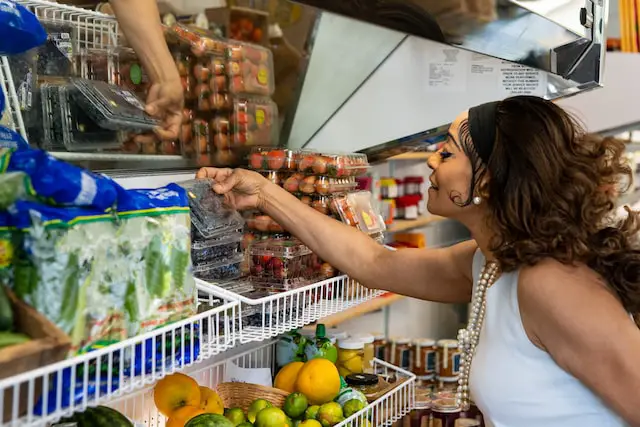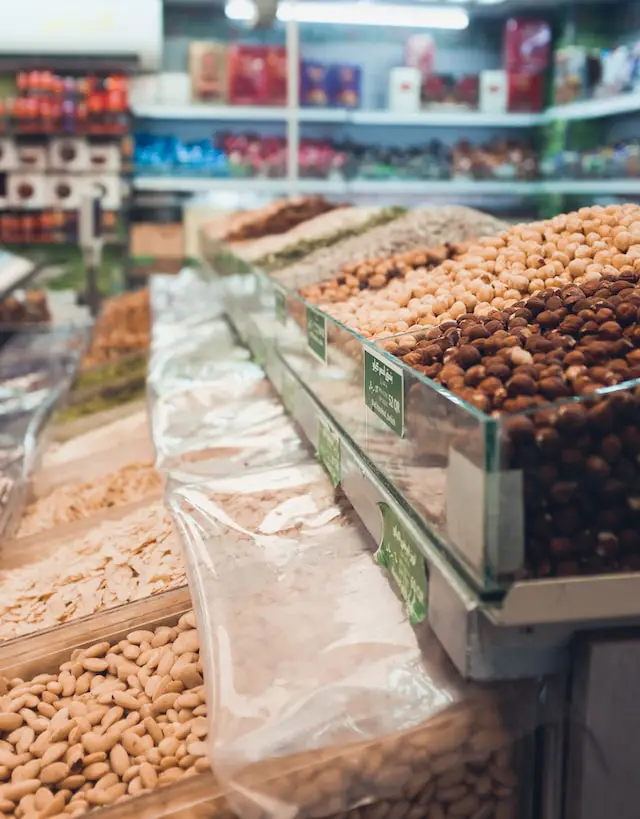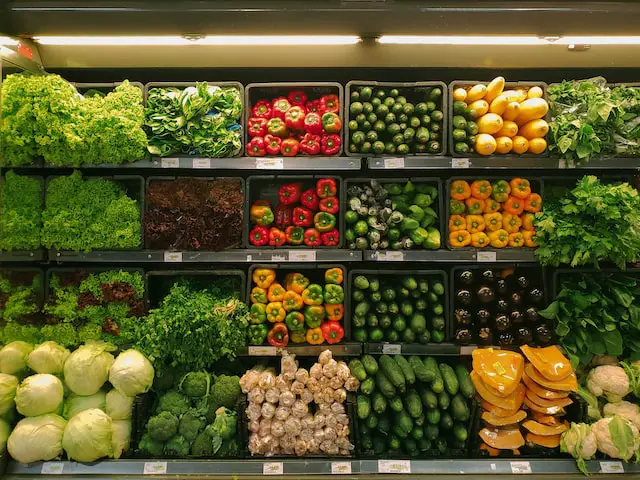Inflation can strain anyone’s budget, making it challenging to save money and maintain a healthy financial life. While we may not have control over inflation, there are ways to control how we spend our money. In this blog post, we will provide ten tips for frugal grocery shopping during inflation in 2023.
What We Will Cover
1. Budget-Friendly Shopping Trips Should Be Planned

Frugal Grocery Shopping List – One of the best ways to save money while shopping is to plan your trips. Start by listing everything you need before you leave home, and stick to it. By doing this, you will avoid impulse purchases and only buy what you need, which will help you stay within your budget.
2. How To Be Frugal Grocery Shopping – Use The Food You Already Have At Home.
Before heading to the grocery store, check your pantry, fridge, and freezer to see what ingredients you already have on hand. Try to plan your meals around what you already have, and only buy what you need to complement those ingredients. This way, you will avoid waste and save money on groceries.
3. Pay Close Attention To Discounts, Sales, And Promotions.
To save money while shopping during inflation, pay attention to sales, discounts, and promotions. Many stores offer weekly or monthly discounts, and you can save a lot by taking advantage of them. Be sure to check your local store’s flyer or sign up for email alerts to stay informed about sales and promotions.
4. Invest In Staple Ingredients – Buy in Bulk

During inflation, it’s essential to be mindful of the cost of the ingredients you’re buying. Opt for low-cost ingredients that can still make delicious meals. Rice, pasta, beans, and frozen vegetables are all inexpensive and versatile options that can be used in various recipes.
5. Think About Utilizing Store Brands Instead
Brand-name products are often more expensive than store-brand products, and in many cases, there is little difference in quality or taste. Consider switching to store-brand products to save money without sacrificing the quality of your meals.
Life Pro Tip: 5 Of The Most Trusted Store Brands Among Grocery Stores
There are many store brands available in grocery stores, but here are five of the most trusted and popular ones:
Kirkland Signature (Costco): Kirkland Signature is a private label brand for Costco, and it offers a wide range of products, including groceries, electronics, and household items. Kirkland Signature products are known for their high quality and competitive pricing.
Great Value (Walmart): Great Value is Walmart’s private label brand and offers a variety of products, including groceries, household items, and personal care products. Great Value products are known for their affordable prices and good quality.
365 by Whole Foods Market (Amazon): 365 by Whole Foods Market is the private label brand for Amazon’s Whole Foods Market. The brand offers a variety of organic and natural products, including groceries, supplements, and personal care items.
Trader Joe’s: Trader Joe’s is a grocery store chain that offers a variety of private-label products, including groceries, snacks, and frozen foods. Trader Joe’s products are known for their unique flavors and affordable prices.
Simple Truth (Kroger): Simple Truth is a private-label brand for Kroger, and it offers a variety of natural and organic products, including groceries, snacks, and household items. Simple Truth products are known for their good quality and affordable prices.
These private-label brands are known for their quality, affordability, and availability in grocery stores. However, it’s important to note that quality can vary between products, so it’s always a good idea to check reviews or try products for yourself to determine which store brand products work best for you.
6. Favorite Foods Can Be Priced-Compare Across Stores
If you have specific foods you like to buy, take the time to compare prices across different stores. You may find that one store offers lower prices on certain items, allowing you to save money by shopping around.
Life Pro Tip: Mobile Apps that Can Price Compare
There are several mobile apps that can help you price compare your favorite foods across stores. Here are some popular ones:
Flipp: Flipp is a free app that allows you to browse weekly ads, coupons, and deals from multiple stores. You can also create a shopping list and use the app to find the best prices on your favorite items.
Download: Apple App Store Google Play
Grocery Pal: Grocery Pal is a free app that allows you to compare prices from various stores in your area. You can also create a shopping list, view weekly deals, and search for coupons.
Download: Apple App Store Google Play
ShopSavvy: ShopSavvy is a free app that allows you to scan the barcodes of products and compare prices from multiple retailers. You can also set up price alerts and create shopping lists.
Download: Apple App Store Google Play
MySupermarket: MySupermarket is a free app that allows you to compare prices from various stores and create a shopping list. The app also provides you with information on coupons and deals.
Download: Google Play
All of these apps are free and can help you save money by finding the best prices on your favorite foods. It’s worth trying out a few of these apps to see which one works best for you.
7. Use Frozen Proteins And Vegetables To Reduce Food Waste

Inflation can make fresh produce and meats more expensive, leading to an increase in food waste. To avoid this, try using frozen vegetables and proteins instead of fresh ones. Frozen vegetables and proteins can be just as nutritious as fresh ones and are often more affordable and last longer.
8. Reduce Ingredient Purchases And Simplify Recipes
During inflation, it’s essential to simplify your recipes and use fewer ingredients. Complicated recipes often require more ingredients, leading to higher grocery bills. Instead, opt for simple recipes that require fewer ingredients and are more budget-friendly.
9. Choose Meat Cuts That Are Cheaper Or Smaller
Meat can be one of the most expensive items on your grocery list. To save money during inflation, look for smaller or discounted cuts of meat. These cuts may require a little more work to prepare, but they can be just as tasty as more expensive cuts.
10. Frugal Organic Grocery Shopping Tips

Buying organic groceries can be expensive, but it’s possible to be frugal while still prioritizing organic and sustainable products. Here are some tips for frugal organic grocery shopping:
Buy in Bulk: Buying in bulk is a great way to save money on organic groceries. Look for bulk bins at your local grocery store, co-op, or health food store. You can purchase items like grains, beans, nuts, and seeds in bulk and save money per pound.
Shop at Farmer’s Markets: Farmer’s markets are a great way to support local farmers and get fresh, organic produce at a lower cost. You can often find seasonal produce at a lower cost than at a grocery store.
Join a CSA: Joining a Community Supported Agriculture (CSA) program is a great way to support local farmers and get fresh, organic produce at a lower cost. With a CSA, you pay a subscription fee at the beginning of the season and receive a weekly box of produce.
Make Your Own Snacks: Organic snacks like granola bars and crackers can be expensive. Try making your own snacks at home using organic ingredients. You can control the ingredients and save money in the process.
By following these tips, you can be frugal while still prioritizing organic and sustainable products. It’s all about being mindful and strategic in your grocery shopping.
Final Thoughts On Frugal Geocery Shopping
In this current economy, inflation can be challenging, but it doesn’t have to strain your budget. You can save money by following these ten tips while enjoying delicious meals. Remember to plan your shopping trips ahead of time, make the most of food already at home, pay attention to sales, discounts, and promotions, purchase low-cost ingredients, consider switching to store brands, price compare your favorite foods across stores, lessen food waste by using frozen vegetables and proteins, simplify recipes and buy fewer ingredients, and find smaller or discounted cuts of meat. By implementing these tips, you can stay within your budget and maintain a healthy financial life.



